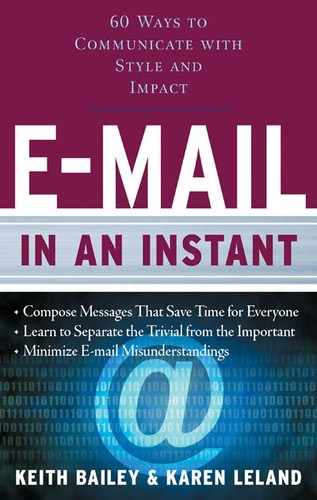26
Consider the Common Comma
Too often people profess that spelling, grammar, and punctuation don’t really count that much in the world of online writing. “It’s only e-mail,” they proclaim.
Not true. The basic laws of the English language are just as important in an e-mail message as they are in a lofty letter. And what could be more basic than the common comma? Consider the following sentence, sans the helpful comma:
But if you don’t take the time to use commas well your words string together making sentences difficult if not impossible to read understand and respond to.
Used properly, the seemingly simple comma can bring organization to your e-mails and meaning to your messages. Following are six situations is which a comma is called for.
#1: When you want the reader to take a brief pause. For example:
• The cafeteria is serving better food, at least since the last time I went.
#2: Separating an aside that is not essential to the meaning of the sentence. For example:
• I cleaned out all the files, which were too thick to fit in the drawer.
In this sentence, all files were cleaned out and they were all too thick to fit in the drawer. However, by removing the comma, the meaning changes. For example:
• I cleaned out all the files that were too thick to fit in the drawer.
In that sentence, only the thick files were cleaned out.
#3: Replacing “and” when placed before a noun. For example, rather than writing:
• The things I like about my job are my boss and my coworkers and my office and the things I get to do during the day.
Replace the “ands” with commas:
• The things I like about my job are my boss, my co-workers, my office, and the things I get to do during the day.
#4: Separating a dependent clause from an independent clause—when the dependent clause comes first. For example:
• After I cleaned the whiteboard, I was able to start the brainstorming session.
The clause after I cleaned the whiteboard is dependent on the second clause.
However, if the independent clause comes first, a comma is not needed. For example:
• I was able to start the brainstorming meeting after I cleaned the whiteboard.
#5: Separating items on a list. For example:
• My last order included pens, paper, rulers, chairs, and fly swatters.
However, if the items in the list are long or contain a comma, use a semicolon to separate the items, and introduce the list with a colon. For example:
• My last order included: pens, for marking the entry tickets; paper, for writing notes; rulers; chairs; and fly swatters.
#6: To introduce a quote. For example:
• I was surprised when I got to work and my boss said, “Good morning. Isn’t it a beautiful day?”
